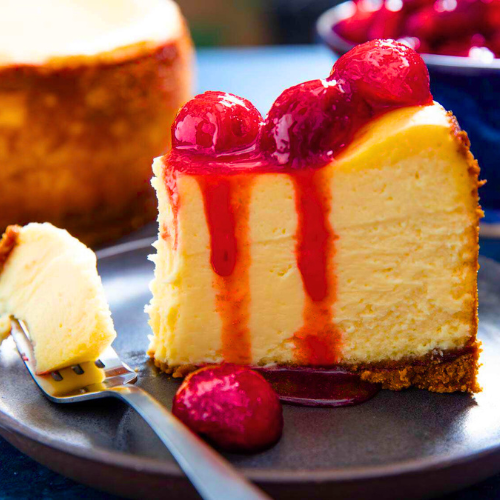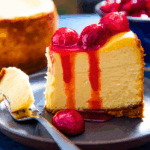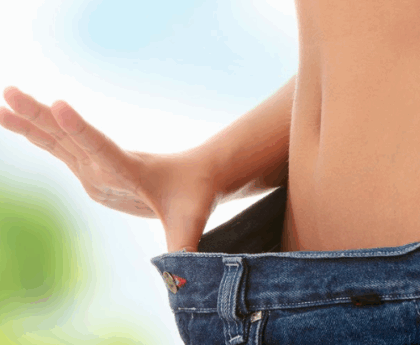Is Cheesecake Supposed to Be Creamy? The Ultimate Guide to Cheesecake Texture
Is Cheesecake Supposed to Be Creamy? Cheesecake is one of the most beloved desserts around the world. Whether you’re indulging in a classic New York-style slice or savoring a no-bake version, one question remains prevalent among bakers and dessert lovers alike: “Is cheesecake supposed to be creamy?” In this comprehensive guide, we will answer that question in detail, explore the science behind cheesecake textures, and provide actionable tips to achieve the perfect cheesecake consistency at home.
Table of Contents
- Introduction: Why Texture Matters in Cheesecake
- Is Cheesecake Supposed to Be Creamy?
- What Makes Cheesecake Creamy?
- Different Types of Cheesecake and Their Textures
- The Science Behind Cheesecake Texture
- Common Mistakes That Affect Cheesecake Texture
- How to Make Cheesecake Creamy: Tips and Tricks
- Can Cheesecake Be Too Creamy?
- FAQs About Cheesecake Texture
- Final Thoughts: Achieving the Perfect Cheesecake Texture
1. Introduction: Why Texture Matters in Cheesecake
When it comes to cheesecake, flavor and texture go hand in hand. While ingredients like cream cheese, sugar, and eggs are responsible for its signature taste, the texture is what defines the eating experience. Some prefer a dense, velvety bite, while others enjoy a light, airy, or custard-like feel.
Texture can make or break your cheesecake, affecting not only the taste but also the aesthetic appeal and mouthfeel. That’s why understanding what texture you should aim for—and how to achieve it—is essential.
2. Is Cheesecake Supposed to Be Creamy?
Yes, cheesecake is supposed to be creamy. Creaminess is a hallmark of a well-made cheesecake, giving it a smooth, luscious mouthfeel that melts as you eat it. A creamy cheesecake is typically free of lumps and cracks, with a silky consistency that holds its shape when sliced but feels soft and smooth on the palate.
However, the level of creaminess varies depending on the type of cheesecake and the recipe you’re following. Some cheesecakes, like New York-style, are denser but still creamy, while others like no-bake cheesecakes are exceptionally light and mousse-like.
In short:
✅ Cheesecake should be creamy.
✅ It should not be dry, rubbery, or overly dense.
✅ It should have a smooth texture without curdling.
3. What Makes Cheesecake Creamy?
Several factors contribute to the creaminess of a cheesecake:
3.1 High-Fat Dairy Products
The key ingredient in most cheesecakes is cream cheese, which contains high amounts of fat. This fat is crucial for a smooth and creamy texture. Some recipes also use heavy cream, sour cream, or mascarpone, which increase the fat content and enhance creaminess.
3.2 Proper Mixing
Overmixing can incorporate too much air, leading to cracks and a spongy texture. Conversely, undermixing can leave lumps. The ideal mixing method involves combining ingredients slowly to create a homogeneous batter.
3.3 Gentle Baking
Cheesecake is typically baked in a water bath (bain-marie) to ensure even heat distribution. This prevents the outer edges from cooking too quickly, which can result in a rubbery texture.
3.4 Controlled Cooling
Cheesecake must be cooled gradually. Rapid cooling can cause cracks and alter the creamy consistency. After baking, it’s best to let it cool in the oven with the door ajar, then refrigerate it for several hours or overnight.
4. Different Types of Cheesecake and Their Textures
Cheesecake is not a one-size-fits-all dessert. Here are some popular types and how their textures differ:
4.1 New York-Style Cheesecake
- Texture: Dense, rich, and ultra-creamy.
- Key Ingredients: Cream cheese, heavy cream or sour cream.
- Baking Method: Often baked with a water bath.
4.2 No-Bake Cheesecake
- Texture: Light, airy, mousse-like.
- Key Ingredients: Cream cheese, whipped cream, gelatin for stability.
- Baking Method: None; requires refrigeration to set.
4.3 Japanese Cheesecake
- Texture: Fluffy, jiggly, sponge-like.
- Key Ingredients: Cream cheese, eggs, flour.
- Baking Method: Baked with steam for a soufflé-like texture.
4.4 Italian Ricotta Cheesecake
- Texture: Slightly grainy but still creamy.
- Key Ingredients: Ricotta cheese.
- Baking Method: Baked, sometimes without a water bath.
4.5 Basque Burnt Cheesecake
- Texture: Custard-like center with a caramelized exterior.
- Key Ingredients: Cream cheese, heavy cream, sugar.
- Baking Method: Baked at high temperature without a water bath.
Key takeaway: Creaminess is a defining characteristic of most cheesecakes, but the degree of creaminess varies based on style and technique.
5. The Science Behind Cheesecake Texture
5.1 Emulsification
Fat and water must emulsify to create a smooth batter. Cream cheese acts as an emulsifier, binding the mixture together. The emulsification process is vital to achieving a creamy texture.
5.2 Protein Coagulation
Eggs provide structure through protein coagulation when baked. If overcooked, proteins tighten excessively, leading to a curdled or rubbery texture. Gentle baking ensures proteins set slowly, maintaining creaminess.
5.3 Starch and Stabilizers
Some recipes include flour or cornstarch to stabilize the batter, preventing cracks and helping achieve a smooth consistency. However, too much starch can make the cheesecake too firm and less creamy.
6. Common Mistakes That Affect Cheesecake Texture
Understanding what to avoid is as important as knowing what to do.
6.1 Overbaking
Overbaking leads to a dry, crumbly, or rubbery cheesecake. A perfectly baked cheesecake should jiggle slightly in the center when you gently shake the pan.
6.2 Undermixing
Lumps of unincorporated cream cheese ruin the smoothness and creaminess. Always ensure ingredients are at room temperature before mixing.
6.3 Skipping the Water Bath
Baking without a water bath increases the risk of overcooked edges and a dry, cracked surface.
6.4 Rushing the Cooling Process
Cooling the cheesecake too quickly can lead to cracks and an uneven texture. Patience is key.
7. How to Make Cheesecake Creamy: Tips and Tricks
If your goal is a perfectly creamy cheesecake, follow these expert tips:
7.1 Use Full-Fat Ingredients
Low-fat cream cheese or sour cream won’t deliver the same luscious texture. Stick to full-fat versions for maximum creaminess.
7.2 Bring Ingredients to Room Temperature
Cold ingredients won’t blend smoothly, leading to a lumpy batter. Always let cream cheese, eggs, and dairy sit out for at least 30-60 minutes before mixing.
7.3 Avoid Overmixing
Mix until just combined to avoid incorporating excess air, which can cause cracks and a spongy texture.
7.4 Bake in a Water Bath
The gentle heat of a water bath prevents the outer edges from cooking too quickly, allowing for even baking and a smoother, creamier texture.
7.5 Monitor Doneness Carefully
Look for a slight jiggle in the center. Overbaking leads to dryness; underbaking can result in a runny center.
7.6 Chill Overnight
Refrigerate your cheesecake for at least 6-8 hours. This allows the flavors to meld and the texture to firm up while remaining creamy.
8. Can Cheesecake Be Too Creamy?
While creaminess is desirable, cheesecake can become too soft or runny if:
- The batter has too much liquid.
- It’s underbaked.
- Not enough stabilizers (like eggs or gelatin) are used.
Key signs of an overly creamy or undercooked cheesecake:
- The center is wet and doesn’t hold its shape when sliced.
- The surface appears shiny and not set.
- It oozes rather than slicing cleanly.
To prevent a cheesecake from being too creamy, follow recommended ratios and baking guidelines.
9. FAQs About Cheesecake Texture
Q1: Is cheesecake supposed to be jiggly when done?
Yes, a properly baked cheesecake should have a slight jiggle in the center when gently shaken. This ensures it is set but still creamy. It will firm up more as it cools.
Q2: Why is my cheesecake not creamy?
Possible reasons include:
- Overbaking, causing it to become dry.
- Using low-fat or non-dairy substitutes.
- Undermixing, leading to lumps.
- Not using a water bath.
To fix this, ensure proper mixing, use full-fat ingredients, and bake gently.
Q3: Should cheesecake be soft or firm?
Cheesecake should strike a balance between soft and firm. It should be creamy and smooth, yet hold its shape when sliced. Overly firm cheesecake is likely overbaked, while overly soft may be underbaked.
Q4: Can I make cheesecake creamier?
Absolutely! Here’s how:
- Add sour cream or heavy cream to the batter.
- Use a water bath.
- Bake at a lower temperature for a longer period.
- Ensure gradual cooling.
Q5: Why is my cheesecake gritty instead of creamy?
A gritty cheesecake may result from:
- Using ricotta without properly draining it.
- Overcooking the cheesecake.
- Failing to fully mix the batter.
Always use room-temperature ingredients and mix thoroughly for a silky texture.
Q6: Is a no-bake cheesecake as creamy as a baked one?
No-bake cheesecakes can be even creamier and lighter due to the absence of eggs and baking. However, they have a different mouthfeel—more mousse-like and less dense than traditional baked cheesecakes.
Q7: How long should cheesecake cool to become creamy?
After baking, cheesecake should cool at room temperature for 1-2 hours, then be refrigerated for at least 6-8 hours (preferably overnight) to set completely and achieve optimal creaminess.
10. Final Thoughts: Achieving the Perfect Cheesecake Texture
So, is cheesecake supposed to be creamy? The definitive answer is yes! Creaminess is central to the classic cheesecake experience, whether it’s the dense and rich New York style, a light and airy no-bake version, or a unique ricotta-based Italian cheesecake.
By understanding the science behind cheesecake texture, avoiding common mistakes, and applying expert baking tips, you can consistently achieve a smooth, creamy, and delicious cheesecake every time.
Pro Tip: Practice makes perfect. Every oven and ingredient behaves slightly differently. Keep notes on your baking times and methods to refine your personal cheesecake recipe.
Additional Resources:
- How to Prevent Cheesecake Cracks
- Best Cheesecake Recipes for Beginners
- Top 10 Cheesecake Toppings You’ll Love
Meta Description:
Is cheesecake supposed to be creamy? Learn the definitive answer, discover tips for the perfect texture, and troubleshoot common cheesecake problems in this expert guide.
SEO Keywords Used:
- Is cheesecake supposed to be creamy
- Why is my cheesecake not creamy
- How to make cheesecake creamy
- Cheesecake texture
- Creamy cheesecake tips
- Cheesecake baking mistakes




